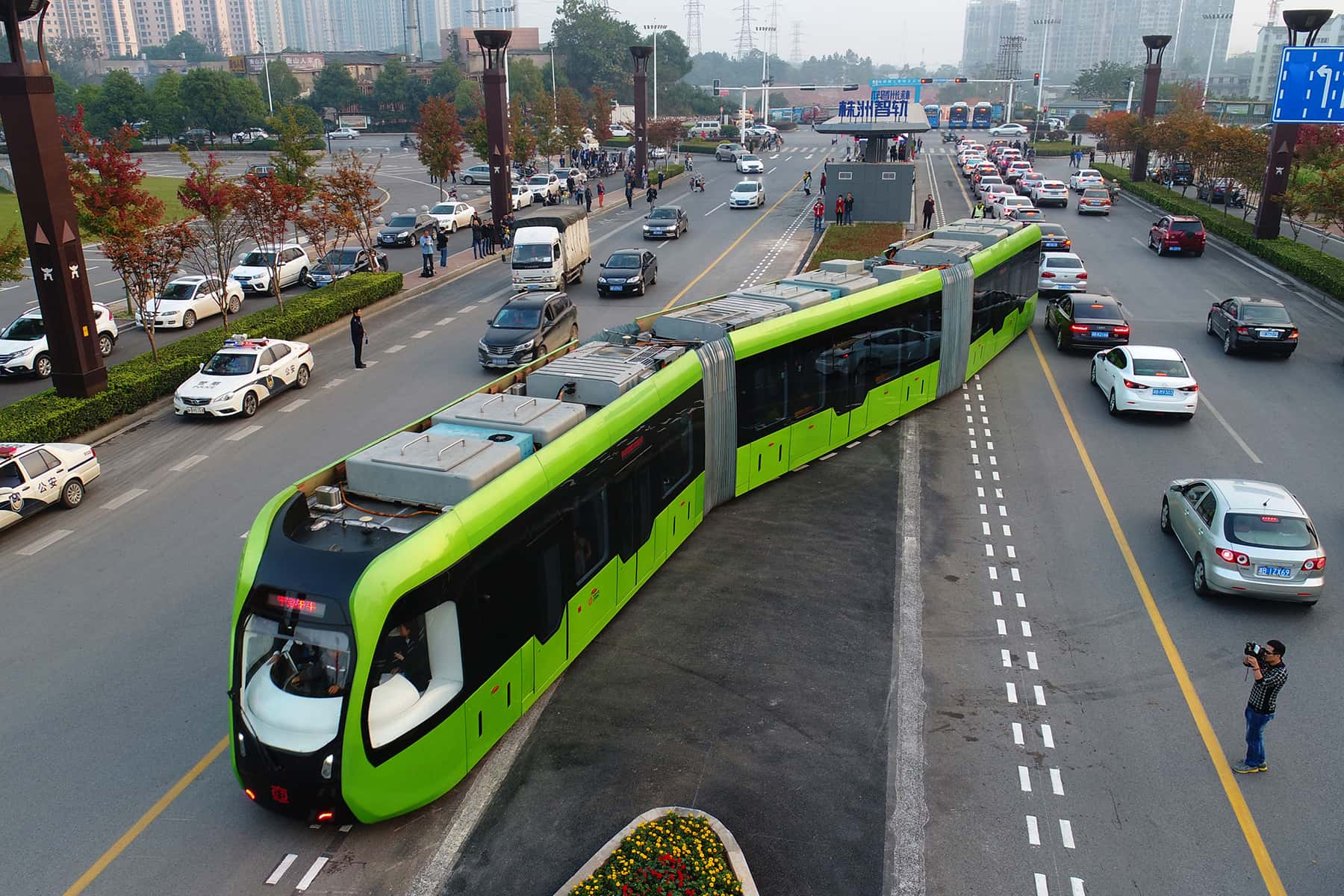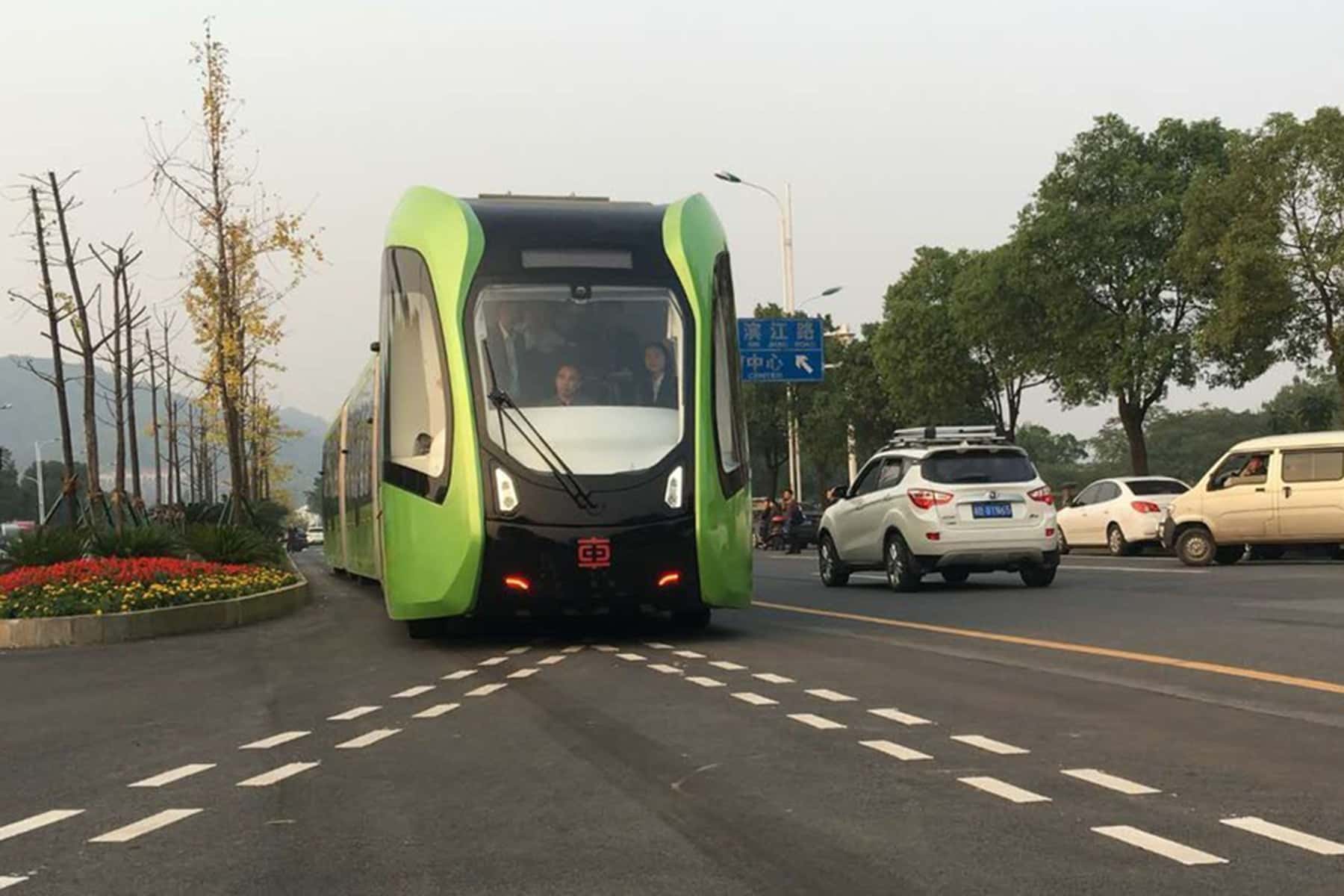
The world’s first Autonomous Rail Rapid Transit (ART) for commercial use was officially launched in Yibin, Sichuan Province on December 5, marking the introduction of a new urban rail transit system pioneered by China.
Dubbed the “Autonomous Rail Rapid Transit,” the ART is essentially a driverless tram. Developed by CRRC Zhuzhou Electric Locomotive Research Institute of China, the system runs on “virtual rails” mapped out by cameras and censors, so it can determine the dimensions of roads and plan its own route.
The Yibin ART T1 line extends for 17.7 kilometers. It is expected to serve more than 10,000 passengers daily, a number that will go up to 25,000 once the Yibin West line is extended to the Chengdu-Guizhou high-speed railway station.
The ART T1 Line resembles the B-type subway carriage, which can increase passenger capacity of a single train to more than 500 passengers thanks to marshaling or wireless reconnection technologies.
China’s CRRC began developing the ART all the way back in 2013 as a way to ease the overwhelming congestion in crowded Chinese urban centers. It is being billed as a cheaper alternative to metros or trams while also being more environmentally-friendly.
The ART was first shown off in 2017 in the Hunan city of Zhuzhou. Since then, there has been a number of tests, including one in the deserts of Doha where the ART will reportedly provide transportation during the 2022 World Cup. Besides Yibin, more than 80 domestic and foreign cities have carried out project follow-ups.
Alex Linder
CGTN
Portions originally published on Shanghai.ist as China’s driverless, trackless train that runs on virtual rails launches first commercial line















